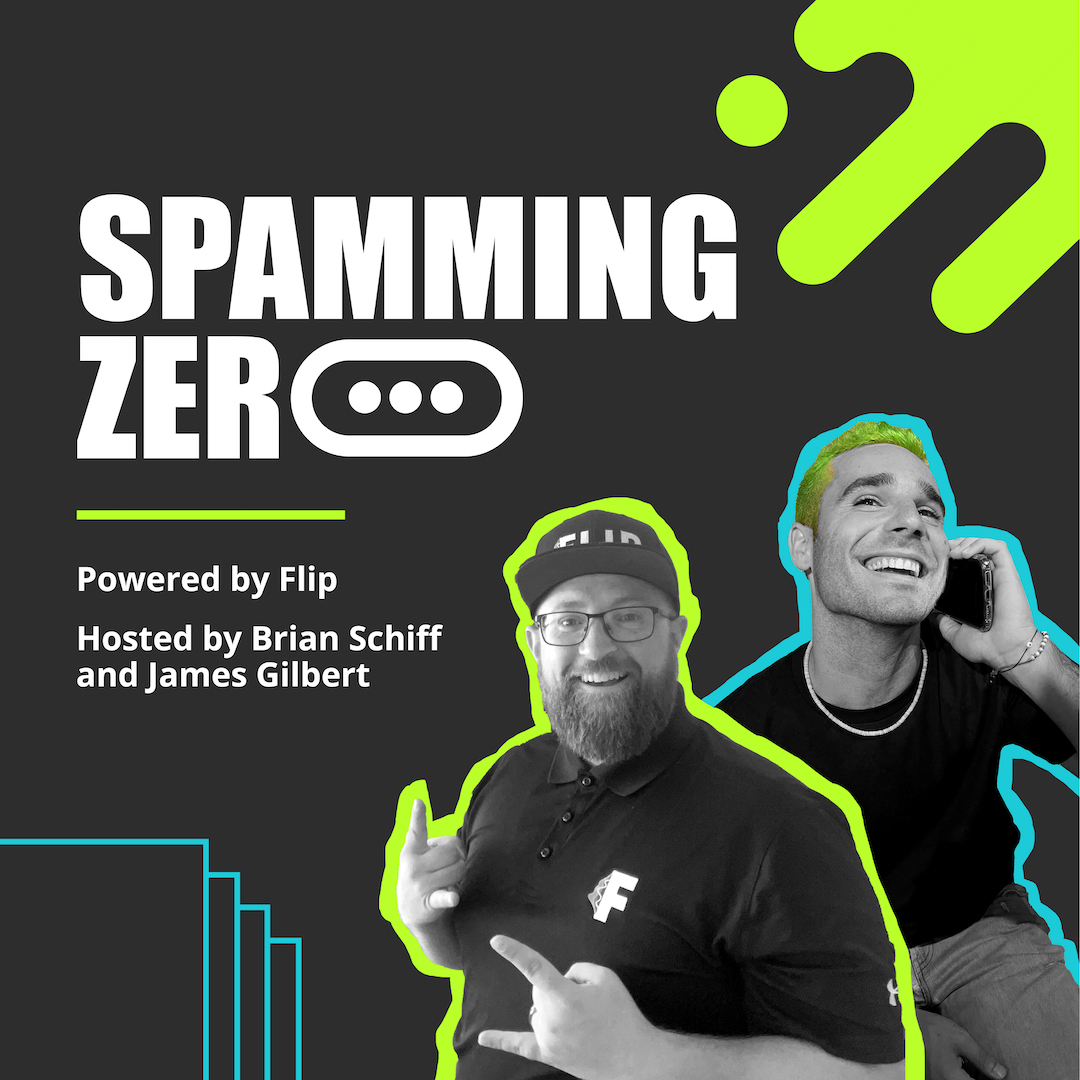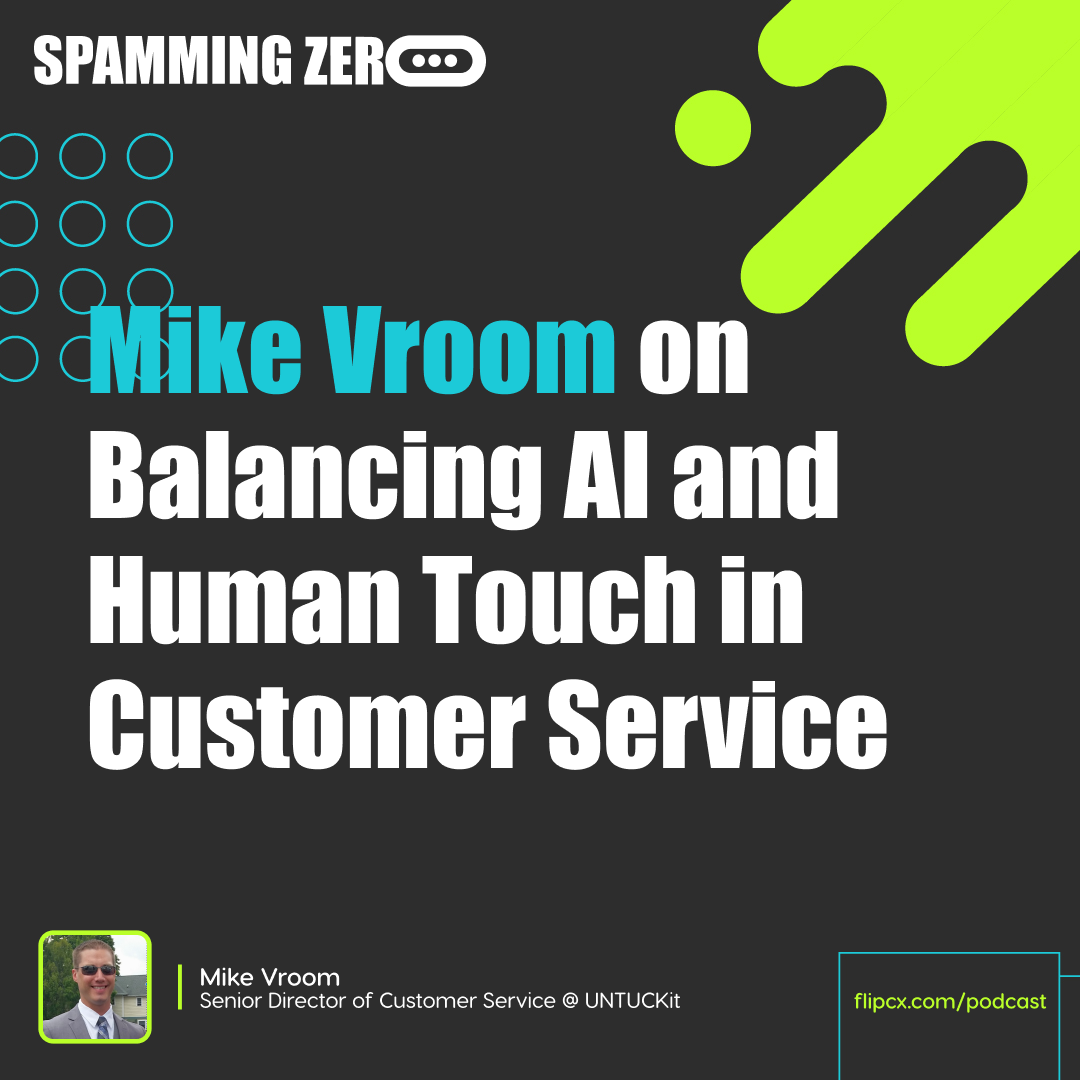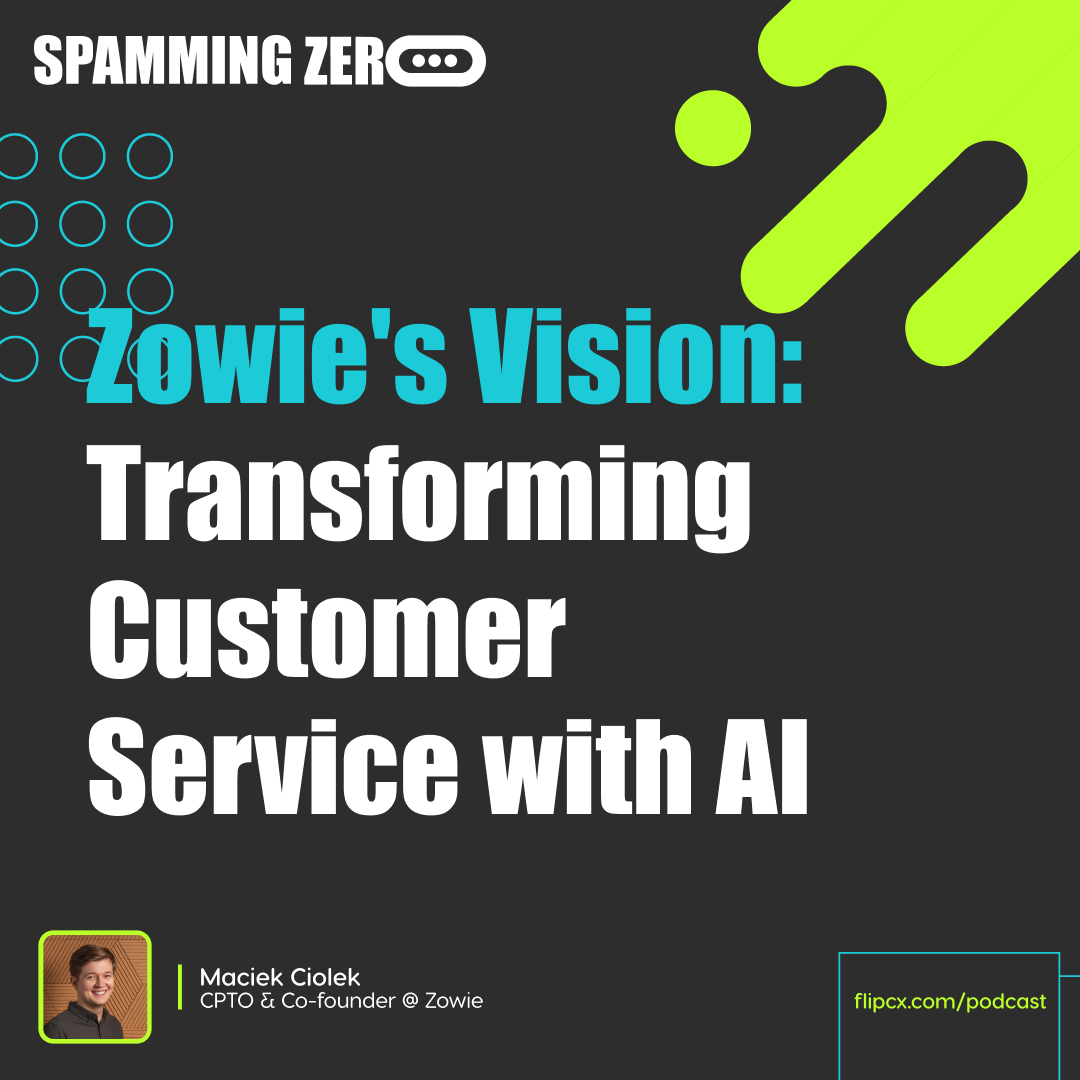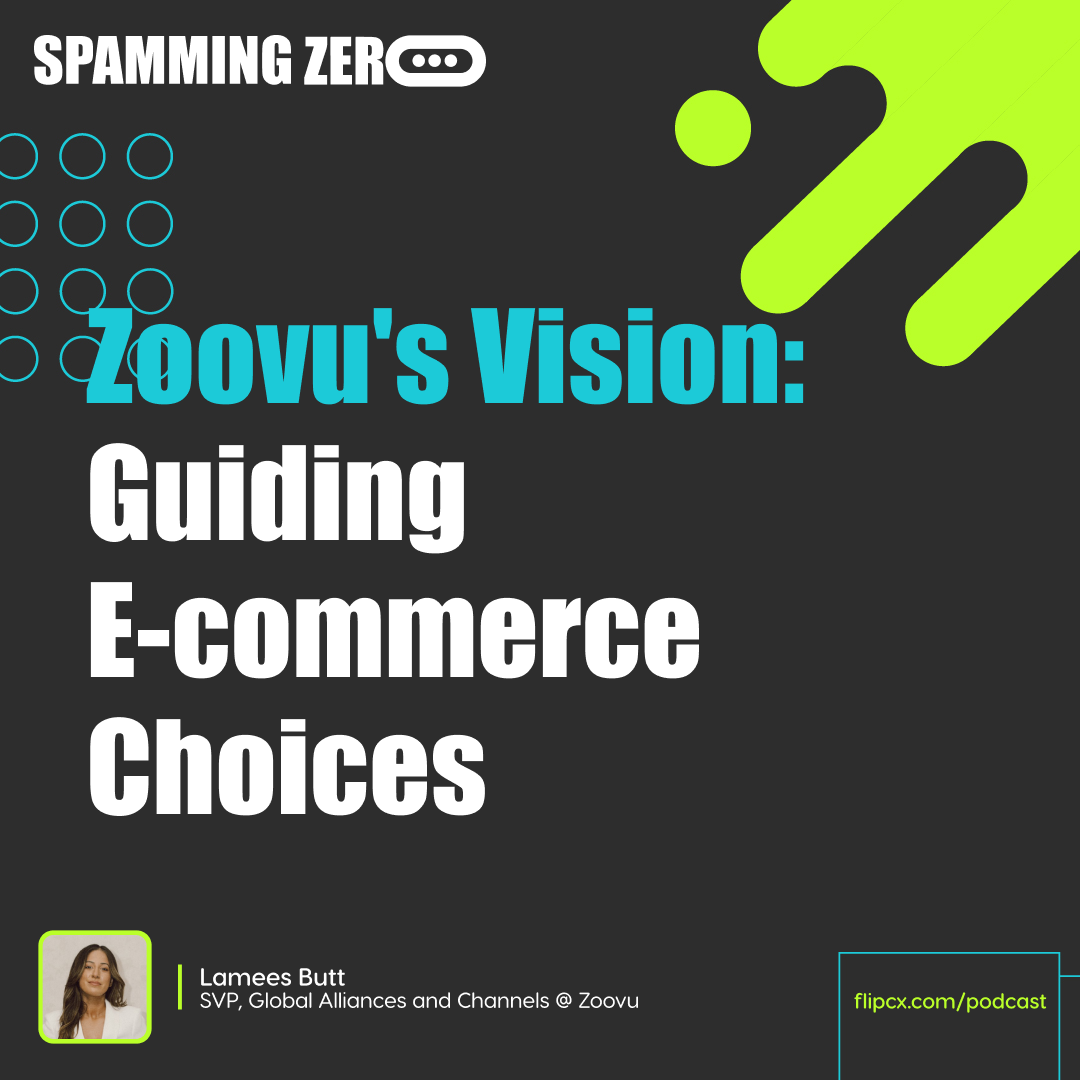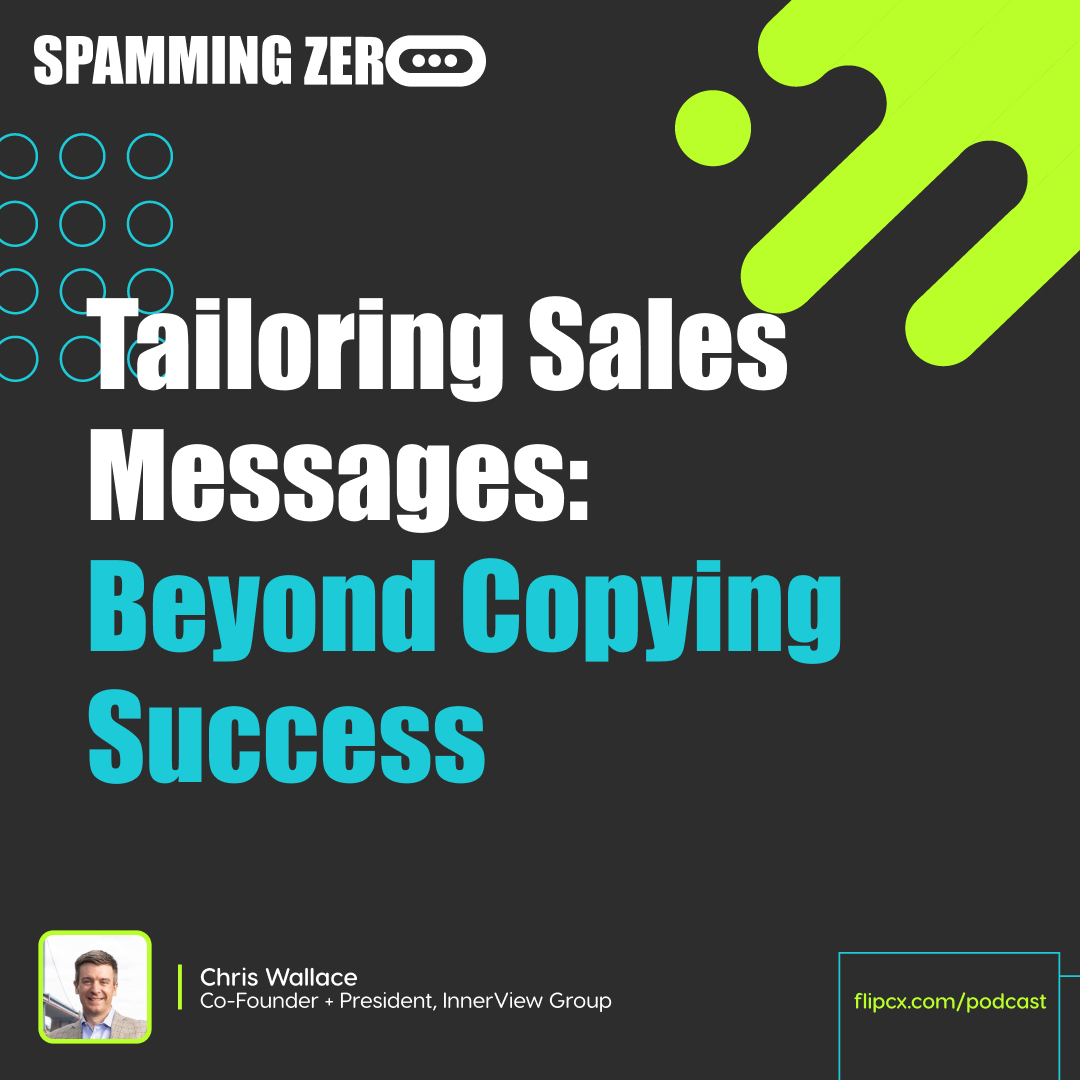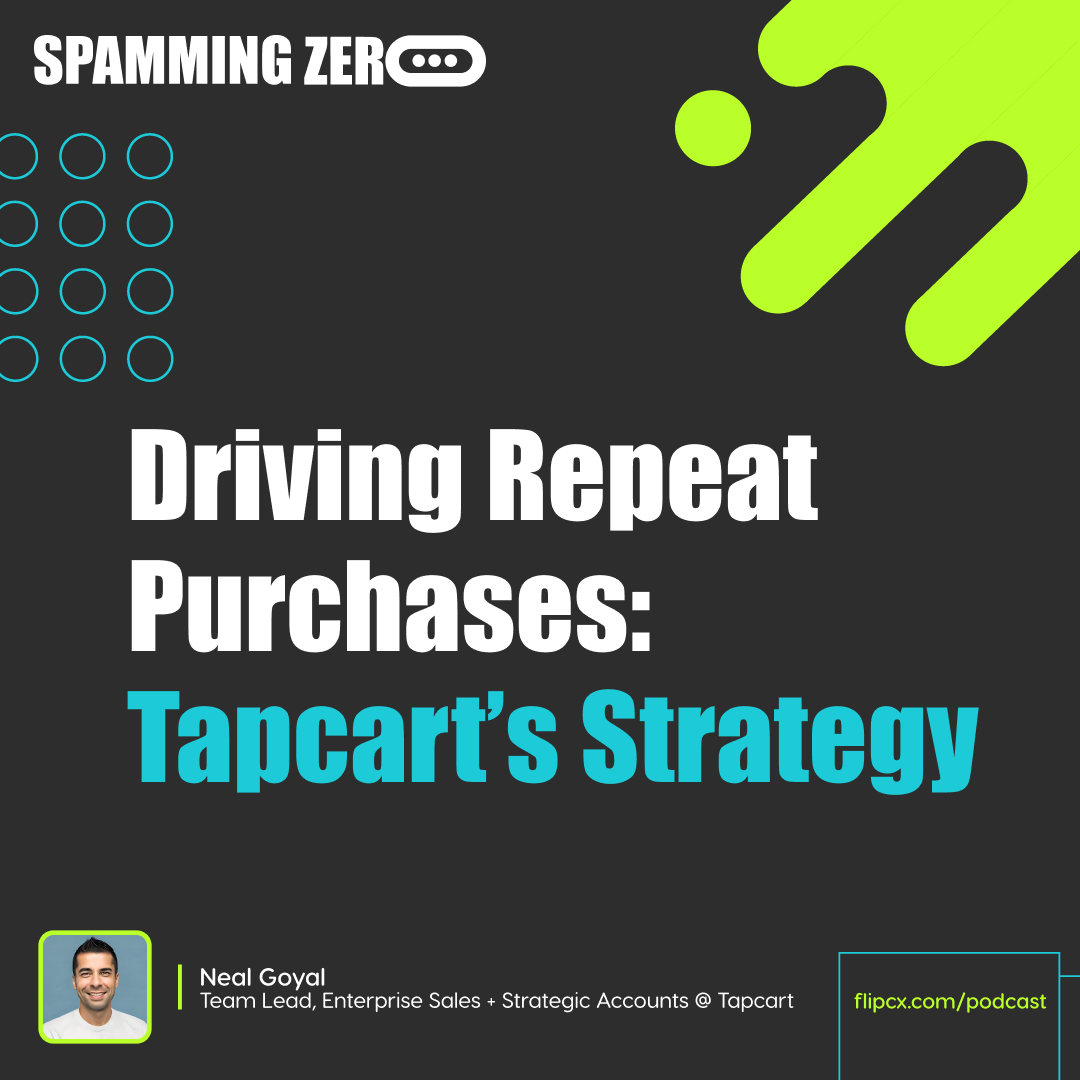Episode 36: Chat With A Call Center Geek
- 0.5
- 1
- 1.25
- 1.5
- 1.75
- 2
James: Hello, and welcome to the show Spamming Zero. I'm one of your hosts, James Gilbert. We're excited because this month's sponsor is brought to you by CXperts. If you need help with your digital experiences, especially when it comes to the customer experience overall and the strategies there, reach out to cxperts. io. They're an incredible team and incredible people that work there. They believe in three pillars of customer experience: CX insights, better understand how your users interact with your brand online, CX optimization, make improvements for your customers and your business goals, and then CX launch, empower your team to make CX a part of your toolkit for success. They are the experts when it comes to customer experience, and they would love to work with you. Again, cxperts. io. I'm James.
Brian: And I'm Brian.
James: And this is Spamming Zero. Welcome to another episode of Spamming Zero, folks. I'm your host today, James. We're not joined by Brian today because Brian has a conflict, but we are joined by an amazing guest, Tom Laird from Expivia. Tom, welcome to the show.
Tom: James, what's up buddy? I'm happy to be here. It's exciting to finally kick this thing off. We've had some good conversation before. I'm excited to finally do it.
James: Yeah, if you're interested in how I found Tom, so Tom dose a ton of videos, so you should go follow him. He's amazingly entertaining. I actually found him through some TikTok videos that he did about customer service, and he was talking about an IVR experience, which is wild because right now we're doing this campaign about IVR, so it's fun. So I reached out to Tom and I was like, " Tom, you're going to come on our show. You have that entertaining factor." So Tom, big shoes to fill today. Tell the listeners a little bit about yourself and your experience.
Tom: Yeah, so James, again, my name is Tom Laird. I'm the CEO of Expivia Interaction Marketing. We're a call center outsourcer. We work with a lot of clients in the customer experience world, from retail to financial services to tech, just a real swath of different types of customers. And have a podcast as well, right? It's called Advice from a Call Center Geek, I guess that's a cheap plug here at the beginning, where we do talk about, I think, a lot of the topics that your listeners are really into as well. So this is something I've done literally my whole entire life. So my family owned a contact center, probably one of the first real customer support centers and outbound centers in the early mid-'80s, and I was like nine years old filling vending machines, hanging out with the smokers in the call center. No computers, just the flip scripts and all that old school stuff. And then really it got into you, right? So from everything from being on the phones to being a supervisor to be in that high energy environment. Worked that company with my family through the early 2000s, and we were up to about 1200 agents at that time. And all financial services, so Bank of America, Citibank, I don't know if I'm allowed to say that, but those clients, right?
James: Too late now.
Tom: Financial services. And then, just real quick, 2008, 2009, 2010 happened and the Great Recession turned into the Great Depression for us. So, like many people out there, the whole private equity thing came in, purchased us, and then, " Hey, everything's going to be the same," and then literally we all got fired like three months later. So the greatest thing that ever happened to me, because that's how Expivia started. We took a lot of the people that were let go from programmers to supervisors to HR professionals and said, " Hey, let's go do this," and we raised some money and started as a startup, literally four agents, and then we've been able to scale it over this last decade to 600 plus. And I think the content has been a huge piece of what we've done, and it's been an exciting part and more, I think, a fun part of the marketing aspect of what we do as well.
James: You have a very unique perspective, because you've been able to see well over a century of almost like a morph of what's happened with customer experience. And I'll give you my perspective on this. Back in really the 2012, 2013, 2014 range, that's when the word customer experience started becoming a thing. And it wasn't really a thing until then. You started seeing roles as CX and chief customer experience officers that were new roles that were just brand new to brands. And I'm curious your take on the evolution of this, and why do you think that was so important to the industry as a whole?
Tom: Because social media freaked people out. When customers finally had the voice to go out and say, " My experience was terrible," where before, even early 2000s, there was really no Facebook. It was just starting to come on. Twitter was really wasn't a thing. And this Web2 space and the social media aspect of NPS and those types of things, where we started to realize our customers and word of mouth could be the biggest detriment or the biggest asset to our company, and I think that's when people started to really take things seriously, not even at that time from the social side of responding digitally, but to shore up or at least try to shore up their house from the customer experience side so that they weren't getting hammered. Because before, everybody was doing everything in the dark, right? So you had a bad experience, maybe you told two people. Now you have a bad experience, you can tell 12,000 people. And I think that that was a huge shift into a lot of people's thinking. I guess one of the good things about social media, I think it's had a real direct effect on customer experience and the job that we want to do and the support that we want to give customers and the experience we want to give them. Yeah, I think that's a huge impact. It had a huge impact.
James: Here's a wild stat for you, and this is based on a ton of different research, but 80% of people would prefer to go to a social channel to complain immediately before reaching out to a brand. So just to give you some context on how true what Tom just said is, 80%. I mean, look, I'm not a big believer in going to social media and complaining about a brand, but I will be the first to tell you that I have had to do that on more than one occasion, otherwise I wouldn't have got a resolution to my problem. So I think the amplification of this that happens is very real, and the detriment to a brand is very real. I wish I could pull up some numbers on this, but I remember a little while back they also did what was the revenue impact of a complaint, and it was like 50X what resolving it and what a single complaint would do in social media and the amplification there. And I just find it interesting, because you've also started a business around this. What is your prediction for the future? What does the future of customer experience look like in your mind?
Tom: Well, that's a absolutely loaded question, but let's take a step back here. And I think I've started to see the evolution of the tools that I can give. So I'm a BPO, so business process outsourcer. I'm a call center outsourcer. We're in the United States. We're charging much higher fees, I don't think that's any surprise, than somebody in the Philippines or India or even Belize or in the Caribbean or Mexico. So we have to provide a service that is much greater value than just having an agent answering calls, right? So I think what you're starting to see... And I was an AI I don't want to say non- believer, because I think that's too an extreme, but everything was AI. You go to call center week last year, and at the end of the year it was funny. Like in 2010, 2011, when everything was social media, that was all you saw was social media stuff and how we're responding to that. Now everything is AI, right? There's AI in every single name, and most of it's not AI. Most of it is just almost fooling people, so it jaded me. I think the ChatGPT thing has opened my eyes up to what a real chatbot should be, what it could be. I was really anti- chatbot. I've demoed all of them, and nothing really did it for me to get me to that level. And analytics for me has become a huge piece. It's a huge aspect of what we do for clients, to be able to give insights into... I love over the Christmas holiday where we had a retail client that launched a brand new product and we could say, " Hey, 34% of the customers who called us used the phrase too expensive when talking about this specific product." To give real insights into not only the customer experience, but the marketing side, the business side, really using the call center as this information gathering system, I think you're starting to see that more and more and more. And that's a huge piece of turning a call center into a profit center, right? And then digital is huge, right? Every RFP that we have gotten in over the last 12 to 18 months post- COVID has had some type of Facebook, Twitter, WhatsApp, Telegram, looking at just beyond voice. Voice is still king. I mean, it really dominates the scene, but from chat and then moving to these digital channels, some of the things that I believe in with the NFTs and the blockchain where that thing could be going as well. There's a lot of ways that this context on our world could be moving. I think self- service is really going to have a huge impact, finally. We've been talking about self- service for forever. I know you guys are doing the terrible IVR thing, and IVRs have been the bane of my existence forever, and everybody wants to put a chap bot on their site and throw it on there. And I still think too, and I did a post on LinkedIn and then I'll wrap this thought up, this ChatGPT thing, I think you're going to see, just like you saw with NFTs, so many people are going to move into the space now and say, " Hey, this is what we did. Look, we've integrated this type of AI technology." You're going to see chatbots everywhere. They're going to be terrible. There's going to be a little bit of a backlash, and then I think you're going to start to see the real work begin and some of the really amazing technology that's really going to come from having this tool. But I think we're going to have to get through a lot of this, I don't know, the jungle of getting through it to get to the really good stuff that I think a lot of people are working on in the quiet.
James: I call this the AI revolution that's happening right now. And you can't hide from it. You can't. You just can't. And you're either adopting it to make yourself more efficient and make your business more efficient, and even in some cases to save on costs, or you're going to get left behind. There's really only two options in some of those cases. And we saw these type of revolutions happen with other things in the past, like the invention of the computer, right? There was a lot of resistance to that, and look what happened. The invention of the internet, look what happened there. These big moments that have changed the way that we do business is happening right now with AI, and I don't just say that because we're an AI company and I'm a big believer in it, but it's interesting because we actually have a little fun with this ChatGPT thing here at Flip. We call ourselves the ChatGPT of Flip, but the difference is so many people are used to the Alexa- like experience. And the creators of Alexa and the people that engineered that are some of our investors and are investing in our product, because what has not happened is that type of experience has not made its way into the automation realm of operations and customer support. And to come back to this community feel that you've been talking about with the NFTs and things, I was just reading a book over the weekend, it's called, " Belonging to the Brand," highly recommend it. You should take a look at that one, Tom. I think you'd really like it. But it's all about building community, and I think that we're seeing this, and you mentioned this as self- serve being the future of some of the customer experience. And I think one of the reasons why AI is so hard to adopt at times is because some of the technology with AI requires a lot of lift and work and months and months of planning. And I think what you're going to start seeing is... We're doing this, right? Technologies where there's out of the box options specifically for verticals that are already tailor- made for that. We like to talk about it like this. There are so many people that think the intents of why somebody would call would be so different, but yet agents are handling the exact same inquiries over and over and over. Almost doesn't even matter if it's a different retail brand. If it's in retail, it's going to be almost the exact same inquiries, " Where's my order? I want to do a return. I want to cancel my order." All of those things become intense. So the more that AI technologies can take those commonalities that happen and make it out of the box options for brands, the more likely it is going to be that brands will invest in those technologies, because I think too much of it requires such a big lift, workflows, engineers, and it shouldn't require that for you to be become more efficient.
Tom: You can't get general adoption, because so many organizations that are smaller... And small, medium sized businesses are really going to be the ones, when it hits to those levels, that's the huge driver of things. And you're absolutely right. I mean, there's such a heavy lift. And I think, again, not to give a cheap plug for BPOs or for us, but I think that's the cool thing about outsourcers is that's all we do, right? So to your point, my guys, they are working on this and that's all they're doing so that when we do have a client. But to your point, it's extremely well taken to have that small retailer that's making skateboards that has four employees that wants to do something like this because they can't afford to outsource. And to be honest, they don't want to answer the phone. They want to make skateboards. I think that there's huge use cases for that all over the world, and it will be a huge differentiator. It's exciting because it is totally changing how I have to think about a call center outsourcer, and this thing has turned into really a technology type brand and a technology space, which is super exciting, with a lot of the tools that are coming out. So the organizations that think that way I think are going to be way ahead because this is not business as usual for sure.
James: A hundred percent. Tom, before we get into the community play, which I want to in just a minute, I want to ask you also... Running BPOs, I think there's a natural environment right now, and I want you to hit it head on, being a BPO provider. What do you think brands can do right now during this time where they're making a lot of cuts? And a lot of those cuts are in the customer service operations area. What would be your advice to, let's say, a CEO or a CFO of any brand that is looking at those as cuts, and how do you ensure that a BPO is still part of the plan and still a strategic play?
Tom: Well, I think there's a couple things. Number one, no matter what, people are budgeting for customer support. One of the big videos that did get a lot of views was talking about even some of the tools, so looking at more efficiency type tools, right? So let's say you do have budget, what are you going to go spend in 2023? Again, quality is always huge, but again, if you have to choose, and you're seeing an economic downturn, maybe you do the WFM. Maybe you do some more advanced type routing. Maybe you look at your processes to try to shore up your handle time to lessen headcount. Looking at those kind of things I think are really, really important than going to purchase a QA platform. Obviously there's a self- service piece of this that you can't ignore. I think people can really realize that if you can move some of those calls, that's going to lower some costs as well. I think the biggest thing with outsourcers is looking to multi- scale things. So maybe if you came to me or you came to a USA center that did your voice in chat and email, maybe you look to then have the USA Center do your voice and then you offshore or nearshore your email your chat, and doing those kind of I don't want to say back office functions, but more digital type functions that maybe lends something that's okay for your brand. So I think that the BPO space is okay, and I think the reason that we're okay is, again, that we are investing when no one else can invest, right? So I am still investing in what technology can bring an ROI to my company but add a ton of value to my customers. And I don't have to worry about making a widget. I don't have to worry about any of that other overhead with inventory, right? The only thing that I'm worried about, and not just me but outsourcers are worried about is how do we service our customers, how do we give them great experiences, and how do we get as much technology and pack this into this as we possibly can? And so I think that's the true value is when you can't invest to go to a partner that is investing that can do it, that can keep your customer experience at a level that you do not fall behind. Because a lot of people will start to fall behind and be like, " Oh man, what do we do now?" So again, if you're going to keep things internal, look at efficiencies, how do you stop your reps from going to four screens, how do you have a single plane of glass for everything when you log in, looking at your self- service model, looking at handle times and those kind of things from an efficiency standpoint. We're looking at workforce management and those kind of efficiency tools. And then, again, I think outsourcers, whether it's nearshore or offshore here in the States, understanding that to stay ahead of the game, that's a really good play because the technology's going to be there if you're using the right partner.
James: Completely agree with you. All right, so let's dive into this community thing, because I think that one of the evolutions of customer experience when you think about self- serve, it's very much driven by community. The data that we're collecting with customer service and support is oftentimes not shared and collected in a way that can be operational and acted on by the rest of the customers and consumers, and I think that more and more of that is going to happen. And I think about big brands that have built a community really, really well. Some of them are leveraging really innovative ways to build that brand experience that really matters to people, that keeps them long lasting and keeps them even fans, for that matter. And there was a couple of examples that were given in the, " Belonging to the Brand", book that I want to call out. One of them was MomBoss built a community, one of the fastest current communities in the world actually, and she did it because she wanted a place where people could come that were moms building businesses and CEOs of businesses and those that were working moms, and she wanted one place for them to come find value with each other. And I think the strongest way to build community is to find a centerpiece that people can feel a part of and feel like they belonged to it. And then there was another one that also I found really fascinating, and that was what Jack in the Box did to reach their community through the metaverse. And so they had all these things in the metaverse, and that's how they reached this community that they had, which were gamers. Jack in the Box, if you're not familiar with them, they're a fast food brand. I might not eat there, but a lot of the kids and elders, I guess. inaudible Yeah, exactly. So that's a great example of also leveraging your community and meeting them where they're at. What's your take on how brands can be innovative in building community with self- serve in mind?
Tom: Community, it's almost the bridge between Web2 and Web3. Social media was the first when you talked about influencers, you talked about followers. That's their community. And I think brands started to see that and said, " I want to do that." I mean, I'm trying to do that on a very small scale, right? A lot of brands realized that the main point of building this community, what I have found, like you said, is adding value, so not only just building around this central theme. Again, I posted today on LinkedIn that so many posts from brands, from people who are trying to build their personal brand on LinkedIn come from a place of selfishness, right? They don't come from a place of really adding value. And I think when people start to see that every time that they go to you or every time that they look at a post or every time they look at something that they're getting value from it, they're going to gravitate towards that. And if brands can start to really show how they can add value, how they're not coming at you, how they're not asking you for anything, you start to build this organic community around it that you can start to utilize when it gets to that tipping point. But so many of us and so many brands make such a mistake of using Web2, Web3 as just an advertising tool where, " I just want sales right now. I want sales." And I have found, we're a very small company, nobody knew who the heck I was even probably four or five years ago, but being consistent with posting content that is not asking for anything... I mean, just like this podcast. We're not trying to sell anything. We're just trying to say, " Here's some experiences that I've had. Hopefully this adds value." I just posted my book, 210 pages. It's on Amazon, but I'm like, "You know what? I know a lot of people want this, so just go download it." And I think-
James: I actually saw that.
Tom: When you do those type of things and you do it over and over and over, the community that you build then can be leveraged for specific things, can be leveraged for NFTs, can be leveraged for different sales aspects, can be leveraged for things that you have built up enough street cred, right? And Gary V, I'm a big follower of Gary V. He basically says, " Jab, jab, jab, and then hook," right? And it's like add value, add value, add value, and then ask, and I think that that's a huge piece of at least what we're trying to do, what I think brands that really do a good job in the space, what they do and how they can quickly add that value and people gravitate towards that on all the different platforms.
James: Completely agree. I had the lucky opportunity to be one of the first board members of a community called Peak Community, which focuses on helping marketers become leaders. And I think one of the most valuable things that we would hear constantly on the board was the following, " This is the only community that I feel like I can come into and directly connect with people and get immediate value from." I mean, almost everybody that would come into the community would be set up with a one- on- one connection with people that are at all levels, and it's immediate value. And I couldn't agree more with you. I always tell my my CEO this, actually, Brian. I always tell him we need to think about ways in which we can drive our go- to market motions that are of much more value led first. And I think you're going to see this more and more from brands, and some of us who may have been doing this for a very long time get smiles on our faces that now this is the way that people are realizing is the right way to do things.
Tom: And James, I think it's fun too. I will get on LinkedIn, I might get three to four questions a day on some call c... And it's awesome because I asked for it. I said, " Hey guys, if you have anything I can help you with..." Everything from, " Hey, I have a 30 to one ratio for our supervisor to call center agent. Do you think that's too much," or, " Hey, we only give four seconds of after call work. What do you give?" And not only do I answer those questions, but then that provides me content for everybody else as well, then I'm making a video out of everything. So it's a win- win as well, because they're kind of feeding you some things from a content standpoint, and I think you can provide a lot of value if you have the expertise and you want to let yourself out there as well.
James: I am curious too, when we position this also with a lot of the listeners that listen to this podcast, which are oftentimes at retail brands and they're customer experience professionals or contact center professionals, and I'm curious how we might think about this from a brand perspective. If I'm a resell brand, how do I provide value first? And here's what I do not think it is, and I'd love to hear your take on what you think it is, I do not think it's sending them a discount code. That is not value first, because you do that with everyone. So Tom, what do you think value led first looks like from a brand perspective?
Tom: There's two pillars that I follow with anything that I post, and I think that retailers or those brands either educate or entertain. And if you can do both, you'll probably go viral, right?
James: Look at Liquid Death. That's exactly what they're doing. They sell water. I mean, water, people.
Tom: No, right. So I think from an education standpoint, it doesn't have to be... Literally my TikToks, and again, not to just talk about me, but I just think so many people are so adverse to trying new things. Literally I just hold a camera and I'll talk about after call work or I'll talk about agents or I'll talk about coaching tips. And I think it's not super crazy entertaining, but for people who are looking to be educated who are newer in the space, they consume it because there's not a lot of things out there because it's such a niche. I've not done a really good job of entertaining, but-
James: I actually think you're doing a pretty good job.
Tom: I think that those are really two important things. And depending on the culture of your brand, there's a lot of really cool brands that I think have done a really good job on that, and they will go viral instantly because they have a following and because they can do that. But from a smaller standpoint, I think we get caught up on the platforms as well, right? Not to get really specific to channels, but we think that TikTok, we got to be funny and we got to do dances when people don't realize that maybe 10 years ago, Instagram is where all the kids were at. Now every single brand in the world is on Instagram and you can't get any organic reach whatsoever. So the platforms, they will evolve over time. I think TikTok, if someone is not on TikTok, if you are B2B, if you are B2C, especially, if you are not on there, no matter what you are, whether you're selling rubber, whether you're selling manufacturing and you got to a widget, you can figure something out that can either educate or entertain and you will get a following. And I would say the more niche, the more rich, because there's not a lot of people that are doing what you would be doing. So the people that think, " No one wants to listen to me because I have something that nobody cares about," you don't need the 10 million people to care about it. You just need maybe those 2000 people that do care, and those people, when you get them then, then you're in business. So yeah, I mean I could go on and on about that.
James: Tom, are we going to see any TikTok dances from you to try and up the entertainment?
Tom: You probably will not. Even before, I had to lift my camera up and my double chin is still... I think I'm okay at the angle here, so I'm not shaking.
James: I mean, look, I don't even know how half these people learn these dances so quickly. My daughter does it, and...
Tom: And James, I think too, but you've start- If you looked at last summer, I don't know, at least my daughter was doing it every day. She was almost like walking down the stairs doing this. And it's I don't want to say died off because they still have them, but even that's evolved a little bit, right? So it's almost like grab your land. It's a land grab on these new platforms, right? So nobody might be listening now, but in three years you build that following, you build that community on a specific platform, you're really in business. And I think that's the thing with TikTok.
James: Yeah, this is the thing that I really can't stress enough. I've been in marketing now for over 20 years and had the opportunity to consult. I ran an agency on the side for a little while, helped consult startups, went to enterprises. Now I've been a CMO. This is my third time as a CMO. And through all of that experience, there is one fundamental truth to all of it, and that is you do not know how to do marketing because it changes too much. And so many people out there are like, " Oh, yeah. Content is key." They throw these little terms out there and, " Oh, yeah. If you're not a good writer, you're a terrible marketer." Well, here's the thing. It's just not true. All these people are doing is providing a POV and they're trying to find their niche, just like you were saying, Tom, and there's too many opportunities throughout the history of time in how we as consumers change. If you just think about the amount of changes that happened from when the pandemic happened to now with marketing, it is night and day, right? And just that little window is a three year window, and that's it. So if that three year window changes, every year is a new window to change. And I think the more that we can be agile with our marketing efforts, the more that we can be agile with how we build a community. But more importantly than all that, we really have to listen. We really have to watch what are customers like, what they are consuming. I think a really good practice to get into is consistently asking your customers, " Where do you consume content, and how do you consume it?" Don't just create to create, but actually asking them and where they consume that content I think is super important for brands.
Tom: One of the other things, too, that I think is important with that is understand maybe the different segments of your community. Again, let's say us from a call center standpoint. We will produce content for that CX professional, that's the C level person, we'll do something for the call center manager, and then maybe that brand new supervisor where we're talking about KPIs, because from a selfish standpoint, we have found that those brand new supervisors someday become the decision makers up here, right?
James: It's so true.
Tom: Just not trying to hammer one specific target, and spreading that out over creating pieces of content that you think different segments of your community will enjoy and consume, I think selfishly can also help you in the long run too. Because this is a long game, from a content standpoint. This is branding. This is marketing. This isn't sales, right? And there's a place for sales all day long, but what we are talking about is really when somebody thinks call center, I want them to think of me and my company, right? Call center outsourcer, that's my goal, right? I'm not nowhere near it, but that's why I do what I do from a branding standpoint. I want to be first of mind because of what we do.
James: Yep. You're basically creating demand in people's minds.
Tom: I like that, demand in people's minds. Yeah.
James: And you have a very specific POV, and that's the point of view that you have, and you got to double down on that. All right, so we're at time, but I got to ask one last question. Staying true to the podcast, we're bringing back this question this year for every guest. So I'd love for you to tell me when you think... All right, so take your BPO hat off. Take the Expivia hat off for a second. Just Tom. You have to call a brand or a service to get something solved. What's the first thing you think about when you have to call customer support?
Tom: What do I think about? I think about I'm going to need at least 25 to 30 minutes of my life to get this, and I got to pick the right moments. And then I got to go through this painful IVR process where I'm going to probably hit zero 14 times because I'm not even going to deal with it to go to an agent. That's the thought processes as I am calling, right? I'm trying to get-
James: What if they changed the code on you and it's not zero anymore?
Tom: Then that's brutal. That's the worst. Shame on every brand that does that. Come on. Yeah, and then you're just stuck in this IVR hell, then you're trying to navigate. And yeah, I mean, I think that it is such a painful experience. And I would prefer, if I'm going to self- service, I'd rather use the chat bott. I'd rather use chat if I'm going to do that. If I'm going to call, I want to talk to somebody, because there are other methods, from the digital standpoint, that I can go deal with if I want to get something quick. I don't need to reset my password, I don't need to go through this process. But even talking about real quick, the Southwest Airlines snowmageddon in Buffalo, and literally they just almost shut everything down, right? They weren't taking calls. They weren't doing any of that. It's such a brutal escapade that some brands put you through, and a lot of times it's because they're going so far into queue, they're trying to keep you in this IVR as long as they can so that maybe their SLAs won't be as bad because they're not counting SLAs in the IVR. So that's a long answer of saying it's painful.
James: I completely agree, but what's wild to me is no company that I know of would ever shutoff sales. None.
Tom: And I will tell you, I will not name any clients, but 80% of our clients, we have probably 90% of the calls is answered within 10 seconds or less on our sales queue, and we might have a 61/ 20 on a customer support queue, right? And I'm like, " Hey, whatever you guys deem." Now, not everybody's like that, but you're absolutely right. There are definitely different SLAs and different metrics for sales.
James: Let me repeat what we said earlier. When people complain to somebody, it's like 50 times more likely than it's going to impact your revenue than a sale would, a single sale.
Tom: I mean, the whole concept of generating a new customer and the cost of that compared to keeping a customer that you already have, that concept gets totally thrown out of the window. They're so often taken for granted. So yeah, we're trying to change that, but it is what it is still at this point in our CX life.
James: Completely agree. Tom, we're going to have to have you on again in the future. Thank you for joining us.
Tom: All right, James. That was fun. Anytime.
James: If you have not yet subscribed to the podcast, please do so. You can find us on Apple, Amazon, you name it. We're actually one of the very first podcasts that you will ever find in B2B on IMDB as well. Go check us out, give us a rating, and if you have a topic that you want to hear or a guest that you want on the show, please let me know, or Brian now, and we would love to have them. Thanks.
DESCRIPTION
Whenever we can, we jump at the chance to chat with fellow geeks here on Spamming Zero. And this week, we were especially fortunate to sit down with Thomas Laird - CEO of Expivia, Author of "More Advice From A Call Center Geek!", and Host of the Advice From A Call Center Geek Podcast - to talk CX, content, community, brand, and a whole lot more.
What’s Covered?
- Tom’s background: a lifetime (for real) in the call center industry
- Our guest’s take on the evolution of CX & why it matters so much
- The future of Customer Experience
- The AI Revolution
- Surviving the cuts: making sure BPO is still a part of the plan and still a strategy play
- How brands can be innovative in building community, with self-serve in mind
- Community + what value-led first looks like from a brand perspective
- And more
Ready for more fantastic Spamming Zero conversations ahead? Listen, rate, and subscribe on Casted, Apple Podcast, or Google podcasts.
Today's Host
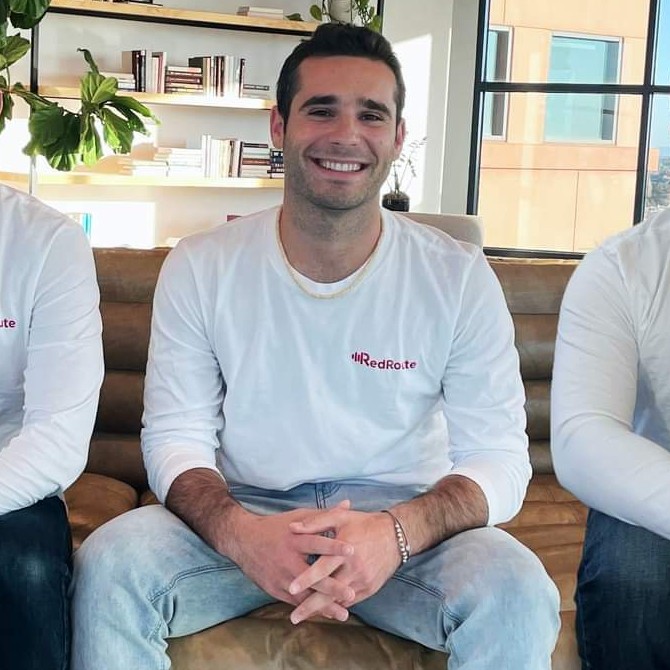
Brian Schiff
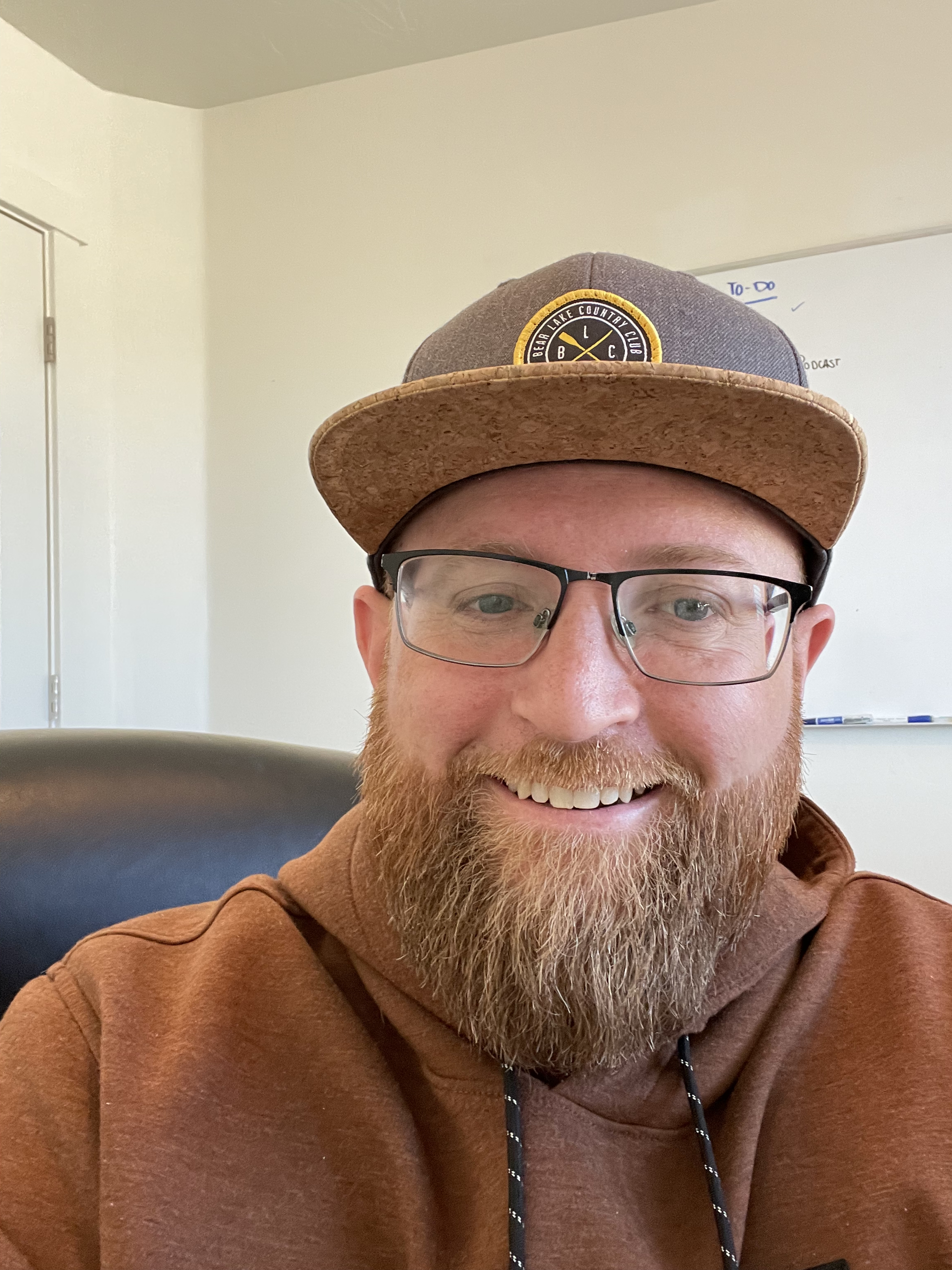
James Gilbert
Today's Guests

